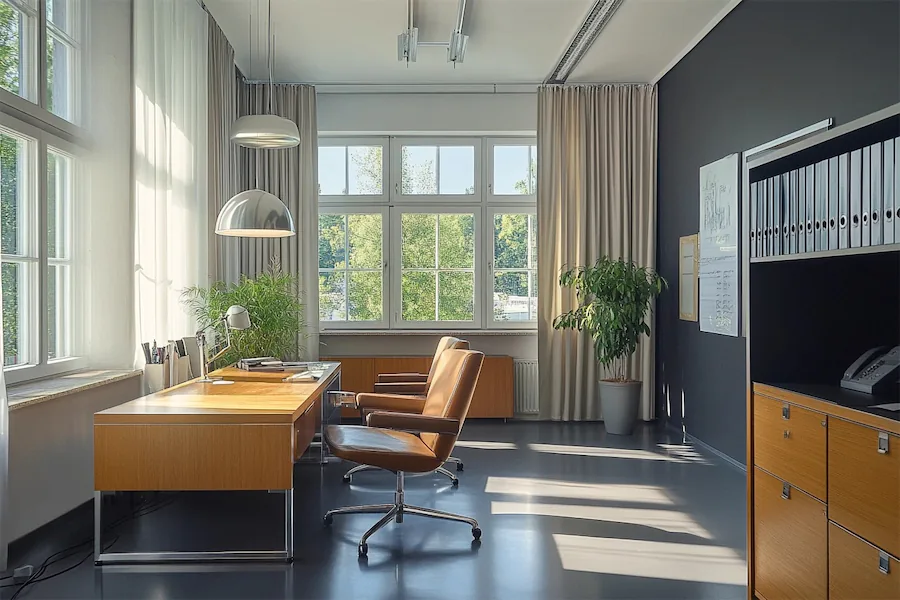A Bauhaus Modern office room embodies the principles of the Bauhaus movement, emphasizing functionality, simplicity, and the integration of art and technology.
Introduction to Bauhaus Modern Office Rooms
The Bauhaus style, originating from the early 20th-century German art school, focuses on minimalist design, geometric shapes, and the harmonious blend of form and function. In an office setting, this translates to a workspace that is efficient, uncluttered, and aesthetically pleasing.
History and Origins of Bauhaus Modern Office Rooms
Founded in 1919 by architect Walter Gropius, the Bauhaus school sought to unify art, craft, and technology. The movement emphasized that design should serve society and that the aesthetic quality of an object is inseparable from its functional purpose. This philosophy profoundly influenced modern design, including office interiors, promoting environments that are both practical and artistically engaging.
Key Features of Bauhaus Modern Office Rooms
- Functional Furniture: Incorporation of pieces that prioritize utility without unnecessary ornamentation, often utilizing materials like steel, glass, and wood.
- Geometric Forms: Use of basic geometric shapes and clean lines to create a sense of order and clarity.
- Open Layouts: Designing spaces that are open and flexible, facilitating movement and collaboration.
- Neutral Color Palettes: Employment of neutral tones, occasionally accented with primary colors, to maintain a balanced and cohesive look.
- Integration of Art and Technology: Inclusion of design elements that reflect technological advancements and artistic expression, such as innovative lighting solutions and abstract art pieces.
Applications of Bauhaus Modern Office Rooms
- Corporate Offices: Creating work environments that enhance productivity through streamlined design and functional furnishings.
- Home Offices: Establishing a minimalist and efficient workspace within a residential setting, promoting focus and creativity.
- Co-working Spaces: Designing shared work environments that are adaptable and conducive to various professional activities.
Considerations When Designing a Bauhaus Modern Office Room
- Material Selection: Choose durable and high-quality materials that reflect the industrial aesthetic of the Bauhaus movement.
- Ergonomics: Ensure that furniture and layout support comfort and health, adhering to the functionalist principles of the style.
- Lighting: Incorporate ample natural and artificial lighting to enhance the workspace’s functionality and highlight design elements.
Conclusion
A Bauhaus Modern office room offers a timeless approach to workspace design, merging functionality with minimalist aesthetics. By embracing the core principles of the Bauhaus movement—such as simplicity, geometric forms, and the integration of art and technology—you can create an environment that is both practical and inspiring.
